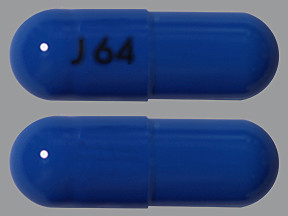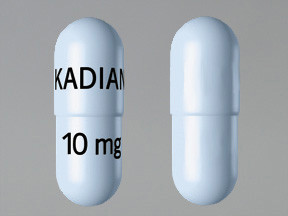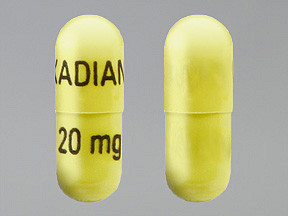MORPHINE SUSTAINED-ACTION CAPSULE - ORAL
PHONETIC PRONUNCIATION: (MORE-feen)
COMMON BRAND NAME(S): Kadian
GENERIC NAME(S): morphine sulfate
Uses
USES: This medication is used to help relieve severe ongoing pain (such as due to cancer). Morphine belongs to a class of drugs known as opioid (narcotic) analgesics. It works in the brain to change how your body feels and responds to pain. The higher strengths of this drug (100 milligrams per capsule and higher) should be used only if you have been regularly taking moderate to large amounts of an opioid pain medication. These strengths may cause overdose (even death) if taken by a person who has not been regularly taking opioids. Do not use the sustained-action form of morphine to relieve pain that is mild or that will go away in a few days. This medication is not for occasional ("as needed") use.
How to use MORPHINE SUSTAINED-ACTION CAPSULE - ORAL
HOW TO USE: See also Warning section. Read the Medication Guide provided by your pharmacist before you start using morphine and each time you get a refill. If you have any questions, consult your doctor or pharmacist. Take this medication on a regular schedule as directed by your doctor, not as needed for sudden (breakthrough) pain. Take this drug with or without food, usually once or twice daily (every 12 or 24 hours). If you have nausea, it may help to take this drug with food. Ask your doctor or pharmacist about other ways to decrease nausea (such as lying down for 1 to 2 hours with as little head movement as possible). Swallow the capsules whole. Adults who have trouble swallowing the capsule may open the capsule and carefully sprinkle its contents on a spoonful of soft, cool applesauce. Swallow all of the drug/food mixture right away without chewing. Then rinse your mouth and swallow the rinse liquid to make sure that you have swallowed all of the dose. Do not chew the mixture or prepare a supply in advance. Do not give this medication to a child this way, since they might chew the mixture and overdose. For children who have trouble swallowing the capsule, ask the doctor about using a different form of morphine instead. The dosage is based on your medical condition and response to treatment. Do not increase your dose, take the medication more frequently, or take it for a longer time than prescribed. Properly stop the medication when so directed. If you are giving this medication through a certain tube into the stomach (gastric tube), ask your health care professional for detailed instructions on how to give it. Before you start taking this medication, ask your doctor or pharmacist if you should stop or change how you use your other opioid medication(s). Other pain relievers (such as acetaminophen, ibuprofen) may also be prescribed. Ask your doctor or pharmacist about using morphine safely with other drugs. This medication may cause withdrawal reactions, especially if it has been used regularly for a long time or in high doses. In such cases, withdrawal symptoms (such as restlessness, watering eyes, runny nose, nausea, sweating, muscle aches) may occur if you suddenly stop using this medication. To prevent withdrawal reactions, your doctor may reduce your dose gradually. Ask your doctor or pharmacist for more details, and report any withdrawal reactions right away. When this medication is used for a long time, it may not work as well. Talk with your doctor if this medication stops working well. Though it helps many people, this medication may sometimes cause addiction. This risk may be higher if you have a substance use disorder (such as overuse of or addiction to drugs/alcohol). Take this medication exactly as prescribed to lower the risk of addiction. Ask your doctor or pharmacist for more details. Tell your doctor if your pain persists or worsens.
Side Effects
Precautions
Interactions
Overdose
Images

- color
- light blue
- shape
- oblong
- imprint
- J64

- color
- light green
- shape
- oblong
- imprint
- J67

- color
- light blue
- shape
- oblong
- imprint
- KADIAN, 10 mg

- color
- yellow
- shape
- oblong
- imprint
- KADIAN, 20 mg
Reviews
Warning
WARNING: Morphine has a risk for abuse and addiction, which can lead to overdose and death. Morphine may also cause severe, possibly fatal, breathing problems. To lower your risk, your doctor should have you take the smallest dose of morphine that works, and take it for the shortest possible time. See also How to Use section for more information about addiction. The risk for severe breathing problems is higher when you start this medication and after a dose increase, or if you take the wrong dose/strength. Taking this medication with alcohol or other drugs that can cause drowsiness or breathing problems may cause very serious side effects, including death. Be sure you know how to take morphine and what other drugs you should avoid taking with it. See also Drug Interactions section. Get medical help right away if any of these very serious side effects occur: slow/shallow breathing, unusual lightheadedness, severe drowsiness/dizziness, difficulty waking up. Do not crush, chew, or dissolve this medication or the contents of the capsules. Taking crushed, chewed, or dissolved forms of sustained-action morphine could cause a fatal overdose. Keep this medicine in a safe place to prevent theft, misuse, or abuse. If someone accidentally swallows this drug, get medical help right away. Before using this medication, women of childbearing age should talk with their doctor(s) about the risks and benefits. Tell your doctor if you are pregnant or if you plan to become pregnant. During pregnancy, this medication should be used only when clearly needed. It may slightly increase the risk of birth defects if used during the first two months of pregnancy. Also, using it for a long time or in high doses near the expected delivery date may harm the unborn baby. To lessen the risk, take the smallest effective dose for the shortest possible time. Babies born to mothers who use this drug for a long time may develop severe (possibly fatal) withdrawal symptoms. Tell the doctor right away if you notice any symptoms in your newborn baby such as crying that doesn't stop, slow/shallow breathing, irritability, shaking, vomiting, diarrhea, poor feeding, or difficulty gaining weight.
Disclaimer
IMPORTANT: HOW TO USE THIS INFORMATION: This is a summary and does NOT have all possible information about this product. This information does not assure that this product is safe, effective, or appropriate for you. This information is not individual medical advice and does not substitute for the advice of your health care professional. Always ask your health care professional for complete information about this product and your specific health needs.

No Reviews Yet